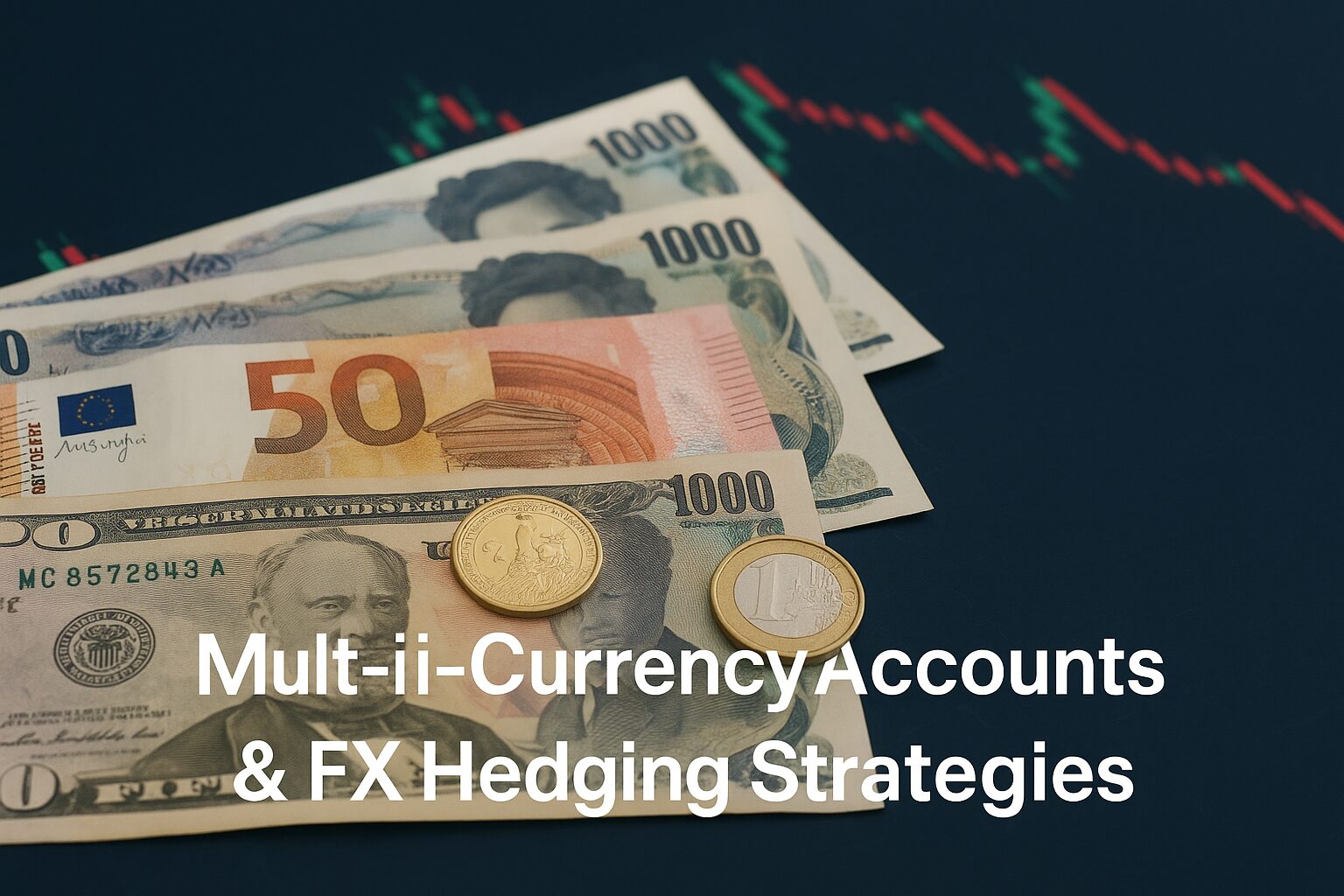Why Currency Matters for Everyone
Money is more than numbers in your account—it is purchasing power. For anyone earning, saving, or spending across borders, the currency in which wealth is stored can mean the difference between stability and silent loss. A strong paycheck in U.S. dollars can shrink by 15% when converted into euros at the wrong time. A life savings in a local currency can erode in months if inflation accelerates.
This is why multi-currency accounts and FX hedging strategies are not luxuries but essentials. They give ordinary individuals the ability to control exposure, reduce conversion costs, and align cash flow with real-world spending.
In this guide, we’ll explore what multi-currency accounts are, why they matter, how to construct a practical currency basket, and which FX hedging tools can protect your global lifestyle.
What Are Multi-Currency Accounts?
Definition and Purpose
A multi-currency account is a banking product that allows you to hold, send, and receive multiple currencies in one account. It could be USD, EUR, GBP, SGD, JPY, or others—managed under a single IBAN or account number.
Key Benefits
- Currency Flexibility – Hold balances in the same currencies you spend.
- Lower FX Costs – Reduce frequent conversions when moving money.
- Global Accessibility – Receive international income in native currency.
- Business & Freelance Utility – Invoice and get paid without losing in FX fees.
Who Needs It?
- Freelancers billing clients worldwide.
- Families with children studying abroad.
- Retirees splitting time between multiple countries.
- Investors managing diversified portfolios.
Constructing a Currency Basket
Instead of guessing exchange rates, think in terms of currency baskets.
Step 1: Analyze Spending Patterns
- 60% USD (home expenses, online services)
- 25% EUR (travel, family in Europe)
- 15% SGD/JPY (education, investments)
Step 2: Align Accounts with Liabilities
- Open sub-accounts or wallets in matching currencies.
- Keep income in its native currency until needed.
Step 3: Rebalance Periodically
- Every 3–6 months, compare expected expenses vs holdings.
- Shift balances to restore proportions.
Benefits
- Stability of real purchasing power.
- Reduced surprise losses from sudden FX swings.
FX Hedging Strategies: Tools and Tactics
1. Natural Hedging
- Matching income and expenses in the same currency.
- Example: Earn USD → spend USD without conversion.
2. Forward Contracts
- Lock in an exchange rate for future needs.
- Useful for tuition, rent, or major planned expenses.
3. Currency-Hedged ETFs
- Investment vehicles that neutralize FX impact.
- Example: USD investor buying hedged European equity ETF.
4. Diversified Holdings
- Spread across multiple currencies and economies.
- Protects against inflation or collapse in one jurisdiction.
Case Study
A digital consultant earning USD but paying €2,000/month rent in Berlin loses $3,600/year when EUR strengthens 15%. By opening a EUR sub-account and converting when rates are favorable, the loss shrinks to $500.
Risks and Mistakes to Avoid
- Over-Hedging – locking too much, losing upside.
- Ignoring Fees – bank spreads, hidden charges matter.
- Illiquid Exotic Currencies – avoid large holdings in currencies with poor convertibility.
- Regulatory Blind Spots – some countries tax FX gains.
Practical Implementation Checklist
- Open a multi-currency account with global banks or fintech providers.
- Map annual expenses by currency.
- Allocate holdings in matching proportions.
- Convert opportunistically, not at last minute.
- Use hedged ETFs for large investment exposures.
- Document all conversions for tax compliance.
FAQ
- Are multi-currency accounts legal everywhere?
Yes, though availability varies by country. - Do I need a business to open one?
Not always—many banks and fintechs offer personal accounts. - What is the minimum balance?
Ranges from $0 at fintechs to $10,000+ at private banks. - Can I use these accounts for daily spending?
Yes, with debit cards linked to each currency wallet.
Conclusion & Next Article Preview
Multi-currency accounts and FX hedging strategies are no longer optional for globally minded individuals. They protect your lifestyle, secure your purchasing power, and simplify international transactions.
